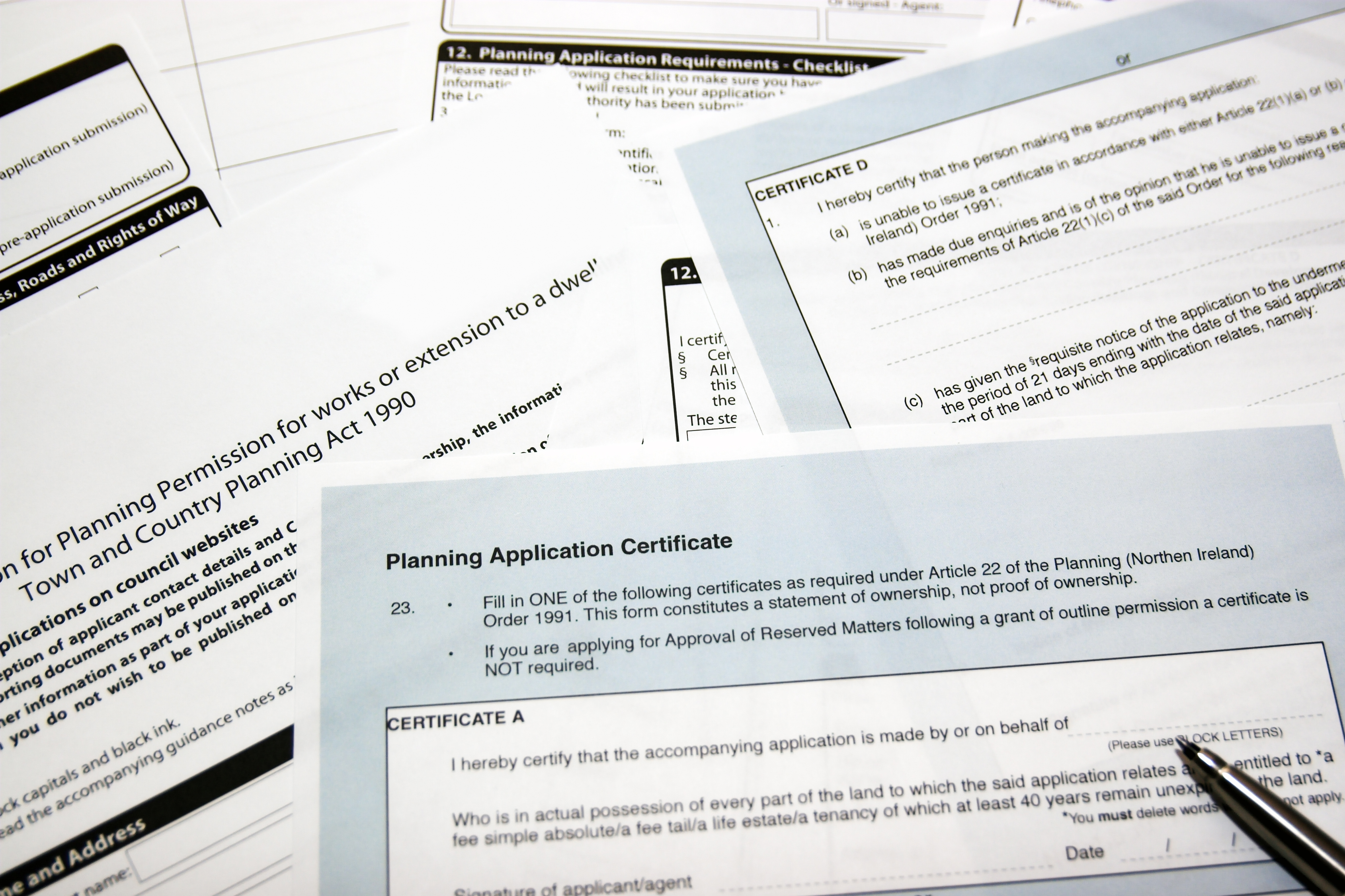Outline Planning Permission and Reserved Matters: The Complete Guide
Securing outline planning permission doesn't mean that you can start building straight away - there are reserved matters to consider. This guide explains it all

- What is Outline Planning Permission?
- What Does an Outline Planning Application Cost?
- What Should it Include?
- What are Reserved Matters?
- Examples of Reserved Matters
- Does Outline Consent Mean Automatic Reserved Matters Consent?
- Who Deals with Reserved Matters Applications?
- When Can I Start Work On Site?
When it comes to securing planning permission for your project, there are two application routes you can take:
- Full planning application
- or an outline planning application.
Many people assume that a full application is needed in every instance, when, really, an outline application may be a more appropriate route to take.
Here we explain what an outline planning permission is, what the application process involves and how this relates to the subsequent reserved matters stage of the process.
(MORE: Secrets of Planning Success)
What is Outline Planning Permission?
For work to begin on site it is necessary for full planning permission to have been achieved (or outline permission and all reserved matters to be approved), as well as for all planning conditions to be discharged.
If you are looking to establish what may be possible on your chosen site, then an outline planning permission application requests that the Local Planning Authority (LPA) considers the principle of your proposal, including certain matters such as siting, scale and means of access, before detailed plans are produced.
But it is important to note that this does not constitute the green light to begin development. It is the first stage of what is generally a three-stage process, which includes:
- Outline permission
- followed by reserved matters permission
- followed by successful discharge of all planning conditions.
How Much Does an Outline Planning Application Cost?
The current outline application fee per 0.1 hectares in England is £462.
The benefits of pursuing an outline planning permission often relate to cost. With an outline planning application, less detailed work is required at an early stage and as such the applicant is exposed to less financial risk – if the LPA does not consider the proposal to be acceptable in principle then the applicant has been able to avoid incurring substantial costs.
But outline planning permission is not always appropriate. In designated areas such as Conservation Areas, locations within the setting of listed buildings and National Parks, for example, the LPA may feel it is unable to determine an application without the full details of the final scheme. In this case, a full application would be necessary.
(MORE: Do I Need a Planning Consultant?)
What Should an Outline Planning Application Include?
As a minimum, outline planning applications should include information on:
- The uses proposed for the development and any distinct development zones
- The amount of development proposed for each use
- The indicative layout
- An indication of the minimum and maximum height, width and length of proposed building
- Areas in which access points to the site will be located
- Outline planning applications for most developments will require a design and access statement.

Outline planning applications may simply include the above as a bare minimum, or they may go into greater detail and include information relating to flood risk, parking, drainage, materials, boundary treatments, tree works and many other matters.
It is a good idea to talk to your LPA about what level of information it considers would be required for your proposed outline application.
Once evaluated by the LPA, the permission decision notice for an outline application will state which matters have been reserved for later approval.
(MORE: How to Get Planning Approval)
What are Reserved Matters?
The current fee for a reserved matters application (per dwelling) is £462 (£401 in Scotland).
If your outline planning application is approved, you will receive outline planning permission, in which the LPA accepts the principle of what you are proposing. In order to be able to start construction, however, it is necessary to deal with the reserved matters (i.e. those details not submitted with the initial outline application).
This requires a reserved matters application, which must be submitted within three years of the date of the outline consent. The scope of what is submitted at the reserved matters stage depends on the level of detail submitted with the initial outline application.
Typical Examples of Reserved Matters
Reserved matters can include:
- Appearance - aspects of a building or place which affect the way it looks
- Means of access - covers accessibility for all routes to and within the site, as well as the way they link up to other roads and pathways outside the site
- Landscaping - the improvement or protection of the amenities of the site to include the surrounding area, this could include planting trees or hedges as a screen
- Layout - includes buildings, routes and open spaces within the development and the way they are laid out in relation to buildings and spaces outside the development
- Scale - includes information on the size of the development, including the height, width and length of each proposed building
For example, you may apply to build a two-storey, 200m2 home with a maximum ridge height of 8m, sited within a certain part of the plot, and set out the means of access. The LPA would determine whether the submitted proposal is in line with local and national planning policy, as well as determining the technical issues submitted, such as whether the access is appropriate and meets highway design standards.
If I Have Outline Consent, Will I Automatically Have Reserved Matters Consent?
An outline planning approval does not oblige the LPA to approve subsequent reserved matter applications. Indeed, reserved matters will all still be determined against relevant local and national policies.
On a site that is sensitive for whatever reason – perhaps due to heritage, landscape or ecological reasons, the reserved matters will still be very carefully considered, as they would for a full planning application, with technical consultees such as Conservation, Ecologists and Tree Officers involved in the decision-making process.
Who Deals with Reserved Matters Applications?
Reserved matters application must be determined within eight weeks (13 weeks for a major application).
Reserved matters applications will normally be dealt with by the same planning officer that dealt with the outline application. Reserved matters for major applications can be undertaken in phases but for the majority for smaller applications, such as a single self build scheme, a single reserved matters application would be appropriate.
When Can I Start Work On Site?
The approval of reserved matters and discharge of planning conditions essentially creates a full planning permission, at which stage construction work can begin.
Allowing sufficient time to clear down all the planning conditions is vital as without clearing the conditions you cannot start work. Underestimating the timeframe for this last part of the process could mean your application runs out of time.
Get the Homebuilding & Renovating Newsletter
Bring your dream home to life with expert advice, how to guides and design inspiration. Sign up for our newsletter and get two free tickets to a Homebuilding & Renovating Show near you.
Sally is a chartered town planner and an expert in all things planning permission. She has significant expertise, specialist knowledge and substantial experience when providing professional advice for self builders and custom builders seeking to build their own home and those who wish to refurbish and extend their properties.
She is Managing Director of Foxley Tagg Planning Ltd (which she formed in 2000), Executive Committee Member – National Custom & Self Build Association (NaCSBA) and a Board Member of the Right to Build Taskforce. Sally and her team are a regular presence in The Planning Clinic at the Homebuilding & Renovating Show.

